Ultra-sound Therapy for Animals
Table of Contents
Ultrasound Treatment
What is it?
Ultra-sound therapy exploits the heating and vibrational effects of ultra-high frequency sound waves (beyond the audible range), to stimulate tissue regeneration and flexibility. The machine used at the AVMC provides an output of 1.1 MHz, with a variable intensity between 0 and 3 W/cm2. (N.B.: this is a therapeutic tool, not an ultrasound diagnostic instrument.)
A ‘sound head' is applied to the skin over the area to be treated, with a good layer of aqueous gel to ensure contact. This reduces reflection at the skin surface and resultant heating of the skin. It also ensures that maximum effect is transferred to deeper tissues. The sound head is moved steadily over the area to be treated, rather than allowing it to remain in one place for a length of time.
Practical Application
 Tendons, ligaments and muscles are good tissues to which to apply this therapy. It can stimulate healing and help to rehabilitate scar tissue and adhesions. Ultrasound treatment aids the restoration of natural elasticity of such tissues.
Tendons, ligaments and muscles are good tissues to which to apply this therapy. It can stimulate healing and help to rehabilitate scar tissue and adhesions. Ultrasound treatment aids the restoration of natural elasticity of such tissues.
In general, short treatments are advised, in any single session, since too much vibration will damage tissues and release ‘free radicals’. If a muscle is in severe spasm, ultra-sound treatment may be painful and it may be better to await muscle relaxation, before trying again. At the AVMC, this form of therapy is used less often than LASER and other therapies, on account of its potential for violent stimulation. There are situations, however, when its unique effect is required for best therapeutic gain.
Warnings
Avoid treating areas near bone, since the shock wave can bruise and eventually damage bone. It may even cause loss of mineralisation around old healed fracture sites if overdone. There is, however, a possibility that very short exposure of a fracture site to ultrasound stimulation may be beneficial.
After treatment, give ‘stretching’ exercises to the tissues involved, to enhance the benefits. Also, ensure high dietary Vitamin C and Vitamin E.
The advantage of our habit of testing all therapies on ourselves, before using them on animals, is that such problems can be discovered before damaging an animal. I treated my own thumb once, on the first day I had the machine, with the result that I bruised my entire forearm, elbow, upper arm and shoulder. I had allowed the vibration to travel up the bones, by applying the sound head to the ball of my thumb for too long, while talking to a client! Happily, homeopathic Arnica dealt with the situation but I would not have known if I had done that to a horse. In my opinion, there are too many gadgets and ‘toys' available to people with no training and no knowledge, who are nonetheless prepared to treat animals for a living. Damage can be done, with no one being any the wiser. A culture of greater caution is required, for the sake of animals (especially horses). Ultra-sound is just one type of valuable machine available, with a potential for serious misuse.
At the AVMC, we are prepared to offer objective advice on therapy machines and their use, to the best of our ability.
The Veterinary Surgeons Act 1966 restricts the treatment of animals (other than your own) with ultra-sound, by anyone other than a fully qualified vet, unless done by a qualified physiotherapist with direct referral from and supervision by your vet.
N.B. Diagnostic Ultrasound is a different process. The correct ‘reading' of diagnostic Ultrasound images should ideally be performed by a veterinary surgeon who specializes in that work or who is very experienced at it and enjoys it.
Homeopathy – Herbs – Acupuncture – Chiropractic – Holistic Medicine – Natural Feeding
